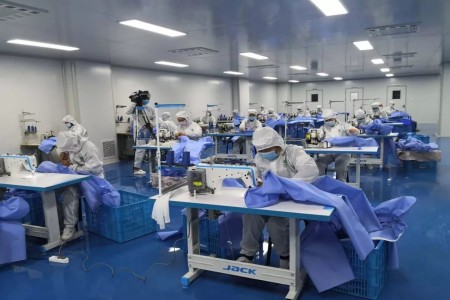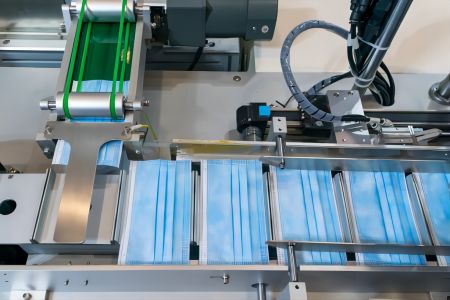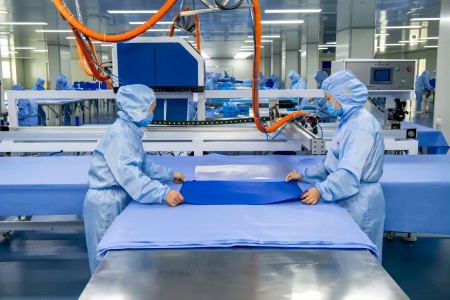2023/6/16

Inside Look: The Process of Manufacturing Isolation Gowns
As the world continues to battle the COVID-19 pandemic, the demand for personal protective equipment (PPE) such as isolation gowns has grown exponentially. However, few people understand the intricate process of manufacturing these essential gears. Isolation gowns are crucial in protecting healthcare workers and patients from infection during medical procedures. The process of making isolation gowns involves several steps, from choosing the right materials to ensuring the gowns meet the necessary standards. In this article, we take an inside look at the process of manufacturing isolation gowns. We'll explore the materials used, the manufacturing process, and the regulations governing the production of these life-saving garments. So, buckle up and get ready to learn more about the process of manufacturing isolation gowns.
Importance of Isolation Gowns in Healthcare
Isolation gowns are a type of personal protective equipment (PPE) that are used to protect healthcare workers and patients from infection during medical procedures. They are essential in preventing the spread of diseases and infections in healthcare settings. Isolation gowns are typically used in hospitals, clinics, and other healthcare facilities during procedures such as surgeries, invasive procedures, and patient care. They are also used in research laboratories and other settings where there is a risk of exposure to infectious agents.
The use of isolation gowns in healthcare settings is critical in preventing the transmission of infections. They act as a barrier between the healthcare worker and the patient, preventing the exchange of bodily fluids and other infectious materials. This helps to protect both the healthcare worker and the patient from the risk of infection. Isolation gowns are an essential component of PPE for healthcare workers and are necessary to maintain a safe and healthy work environment.
Isolation gowns come in various types, including disposable, reusable, and surgical gowns. The type of isolation gown used depends on the procedure being performed, the level of protection required, and the regulations governing the use of PPE in a particular setting.
Materials Used in Isolation Gown Manufacturing
The materials used in the manufacture of isolation gowns depend on the type of gown being produced. However, most isolation gowns are made from non-woven materials such as spun-bound polypropylene, SMS (spun-melt-spun) materials, or laminated materials. These materials are lightweight, absorbent, and provide a barrier against fluids and other infectious materials.
Spun-bound polypropylene is the most commonly used material for isolation gowns. It is a non-woven material that is made from a thermoplastic polymer. It is lightweight, breathable, and provides excellent protection against fluids and other infectious materials. SMS materials are also commonly used in the manufacture of isolation gowns. They are made from a combination of spun-bound and melt-blown materials, providing a higher level of protection than spun-bound polypropylene.
Laminated materials are also used in the manufacture of isolation gowns. They are made by bonding two or more layers of materials together, providing a higher level of protection than non-laminated materials. Laminated materials are also more durable and can be reused multiple times, making them more cost-effective in the long run.
Manufacturing Process of Isolation Gowns
The manufacturing process of isolation gowns involves several steps, from designing the gown to packaging the finished product. The process typically begins with designing the gown, determining the appropriate materials to use, and selecting the manufacturing method.
Once the design and materials have been chosen, the manufacturing process begins. The first step is to cut the material to the appropriate size and shape using a cutting machine. The cut pieces are then assembled using a sewing machine or ultrasonic welding machine, depending on the type of material being used.
After the gown has been assembled, it undergoes quality control checks to ensure that it meets the necessary standards. The gown is inspected for defects, such as tears, holes, or loose threads, and any issues are addressed before the gown is packaged.
Quality Control in Isolation Gown Production
Quality control is an essential part of the manufacturing process for isolation gowns. It ensures that the gowns meet the necessary standards and are safe for use in healthcare settings. Quality control checks are performed at every stage of the manufacturing process, from selecting the materials to packaging the finished product.
The first step in quality control is to ensure that the materials used in the manufacture of the gown meet the necessary standards. This involves checking the materials for defects, such as tears, holes, or other issues that could compromise the integrity of the gown.
Once the materials have been checked, the gown is assembled, and quality control checks are performed at every stage of the process. This includes inspecting the gown for defects such as tears, holes, loose threads, or other issues that could compromise its integrity. Any issues are addressed before the gown is packaged and shipped.
Sterilization and Packaging of Isolation Gowns
Once the isolation gowns have been manufactured, they undergo sterilization to ensure that they are free from bacteria, viruses, and other infectious agents. Sterilization is typically achieved using ethylene oxide gas, gamma radiation, or steam.
After sterilization, the gowns are packaged and shipped to healthcare facilities. The packaging typically includes instructions for use, storage, and disposal of the gowns. The packaging also includes information about the level of protection provided by the gown, such as whether it is rated for use in a surgical setting.
Regulations and Standards for Isolation Gown Manufacturing
The manufacture of isolation gowns is governed by several regulations and standards, including those set by the Occupational Safety and Health Administration (OSHA), the Food and Drug Administration (FDA), and the Centers for Disease Control and Prevention (CDC). These regulations and standards ensure that the gowns are safe for use in healthcare settings and provide the necessary level of protection against infectious agents.
The FDA regulates the manufacture of medical devices, including isolation gowns. Manufacturers must comply with FDA regulations, including obtaining FDA clearance for their products before they can be sold in the United States.
The CDC also provides guidelines for the use of PPE in healthcare settings, including the use of isolation gowns. These guidelines help to ensure that healthcare workers are adequately protected against infectious agents and that patients are not exposed to unnecessary risks.
Challenges Faced in Isolation Gown Production During the Covid-19 Pandemic
The COVID-19 pandemic has presented several challenges for the manufacture of isolation gowns. The high demand for PPE has led to shortages of materials and production capacity, making it difficult for manufacturers to keep up with the demand.
Isolation gown manufacturers have had to adapt to the changing needs of the market, including increasing production capacity, sourcing alternative materials, and developing new manufacturing methods. The pandemic has also highlighted the need for greater preparedness and resilience in the manufacturing sector, with many countries and companies investing in developing local manufacturing capabilities for PPE.
Future of Isolation Gown Manufacturing
The manufacture of isolation gowns is likely to remain an essential part of the healthcare sector for the foreseeable future. The COVID-19 pandemic has highlighted the importance of PPE in healthcare settings, and many countries are investing in developing local manufacturing capabilities for PPE.
In the future, we can expect to see continued innovation in the materials and manufacturing methods used to produce isolation gowns. This will include the development of more sustainable materials and manufacturing processes that reduce the environmental impact of PPE production.
Conclusion
The manufacture of isolation gowns is a complex process that involves several steps, from selecting the appropriate materials to ensuring that the gowns meet the necessary standards. Isolation gowns are an essential component of PPE for healthcare workers, providing a barrier against infectious agents during medical procedures. The COVID-19 pandemic has highlighted the importance of PPE in healthcare settings, and the manufacture of isolation gowns is likely to remain an essential part of the healthcare sector for the foreseeable future. As we continue to battle the pandemic, it is essential that we work together to ensure that healthcare workers have access to the PPE they need to protect themselves and their patients.



 WhatsApp
WhatsApp
Send us your message
You can send an email asking for the price and detailed information of this product. We will reply you as soon as we receive your email